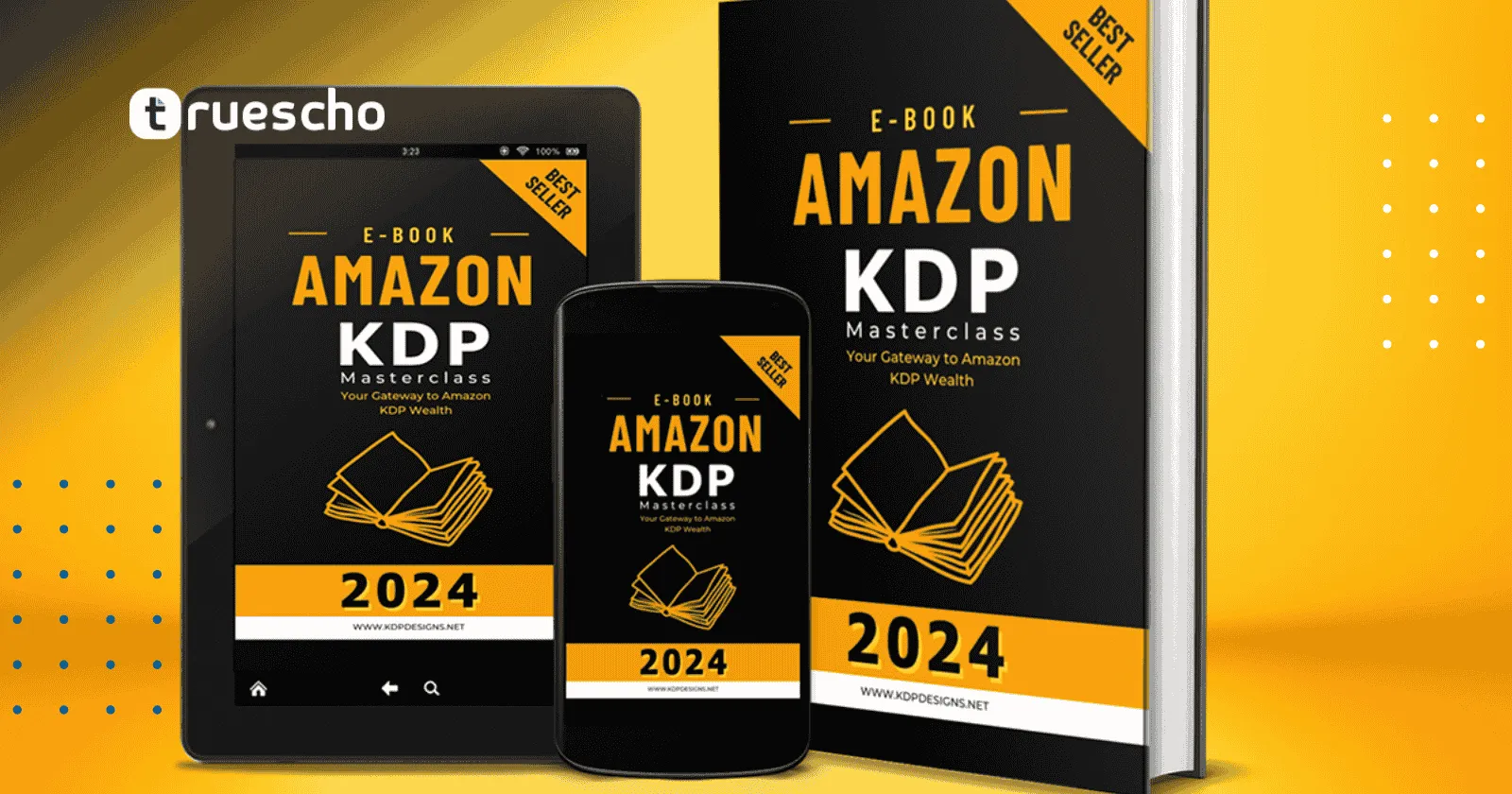Amazon KDP Blueprint : Shaped Word Search
Table of Contents
- Overview of Shaped Word Search Puzzle Books
- Why Focus on This Niche?
- The 4-Step Amazon KDP Blueprint for Shaped Word Search Puzzle Books
- Step 1: Conceptualization and Keyword Research
- Step 2: Creating the Puzzle Book Interior
- Step 3: Designing an Engaging Book Cover
- Step 4: Publishing on Amazon KDP
- Additional Tips and Best Practices
- Conclusion
Overview of Shaped Word Search Puzzle Books
Shaped Word Search puzzle books differ from traditional word search puzzles in that they incorporate unique shapes and images for visual appeal. Imagine a word search that isn’t confined to a boring square grid, but rather takes the form of a bear, house, or other imaginative shapes. The visual twist not only engages a variety of audiences—from kids to adults—but also breaks the monotony of conventional designs found in most word search books.
Although regular word search books are widespread, the shaped variant is a niche with relatively low competition. A search on Amazon for shaped word search puzzle books yields around 2,000 results, compared to the far greater numbers for generic word searches. With the right strategy and creative execution, it is possible to capture a significant share of this market.
Read also: Amazon KDP Ads Q4 Strategy: 5X Your Sales Fast
Why Focus on This Niche?
- Relevance: The content speaks directly to enthusiasts looking for visually engaging puzzles.
- Specificity: Using the term “shaped word search” narrows down your target audience to those seeking unique word puzzles.
- Search Volume Potential: Even though the niche is specific, combining it with the broader appeal of Amazon KDP increases your reach.
- Low Competition: Emphasizing on niche designs provides an edge over books that compete in a saturated market of generic puzzles.
The 4-Step Amazon KDP Blueprint for Shaped Word Search Puzzle Books
Below is the comprehensive four-step blueprint to help you transition from idea to a published puzzle book on Amazon KDP.
Step 1: Conceptualization and Keyword Research
The first step in showcasing your skills in low-content publishing is to sharpen your focus with in-depth keyword research. Begin by confirming your niche—Shaped Word Search—and then expand the horizon by including broader search parameters such as Amazon KDP publishing.
- Utilize online keyword research tools to analyze search volume and competition. Tools like Book Bolt allow you to explore the activity book category and identify lucrative sub-niches.
- Sort your search by top-ranking puzzles to find inspiration and gauge customer interest.
- Fine-tune your keyword list so that it maintains a density of 1-2% throughout your final book interior and cover design instructions.
“Specificity in your keyword strategy, especially focusing on ‘Shaped Word Search’, is essential to attract your niche audience while keeping competition minimal.”
Step 2: Creating the Puzzle Book Interior
After thorough research, begin designing the interior of your puzzle book. Modern publishing platforms have made this stage considerably easier than in previous years. With tools such as Book Bolt, you can both research and design your book in one single platform. Here’s a breakdown of the process:
- Set Project Parameters:
- Set the dimensions to 8.5 x 11 inches – the standard size for word search puzzles.
- Opt for a black and white interior with white paper to keep production costs economical.
- Decide on the page count—in our example, a 92-page interior is selected to mimic a successful competitor.
- Designing Your Puzzle:
- Select a ready-made template from Book Bolt’s extensive library. Choose the shaped word search template that fits your concept (e.g., a bear, house, robot, or arrow shape).
- Customize the puzzle grid size. For a children’s puzzle book, a 20 x 20 grid is sufficient, ensuring that it is easy to solve while still being engaging.
- Define settings such as number of words per puzzle, orientation, and difficulty options (like diagonal words or reverse words).
- Enhance the Puzzle Presentation:
- Add a custom quote or instruction snippet at the bottom of each puzzle page to create a friendly, engaging experience.
- Utilize design elements like borders—using a minimum of 5-pixel width and contrasting colors—to make the puzzles stand out.
- Create solution pages wisely to keep the page count optimized; for example, placing multiple solutions on one page saves both space and production cost.
Always preview your puzzle interior and ensure every page meets the design criteria. Adjust the layout by ungrouping and regrouping elements to create the best visual composition. Remember, even slight adjustments can significantly enhance the overall presentation.
Read also: NASA astronauts return from long Space Station stay
Step 3: Designing an Engaging Book Cover
The cover is the first element that catches a potential buyer’s eye. An engaging cover is crucial in converting interest into sales. Follow these guidelines to create a professional-looking book cover:
- Background and Color Scheme: Start with a full-page rectangle that acts as the background. Adjust the background color to complement your interior design. For instance, a soft blue background tinted with a subtle shadow provides depth and professionalism.
- Typography:
- Add a bold headline that clearly reads “Shaped Word Search” or a similar captivating title. Experiment with readable fonts, such as Anon or Archo Black, to ensure legibility on both digital and print formats.
- Adjust text properties like font color, size, and effects (a subtle drop shadow can make the text pop) to maintain a balanced and attractive design.
- Visual Elements:
- Incorporate design elements from the interior pages. For example, if your design includes a house illustration or themed graphic, embed a small version on the book cover to evoke consistency in theme.
- Utilize design resources like Pixabay or Unsplash for high-quality illustrations. Ensure that every image used fits the black and white or colored theme specified for your project.
- Layout and Finishing Touches:
- Balance the layout by positioning the title text and sample pages from the interior strategically. This not only informs the potential buyer about the content but also aesthetically ties the front cover with the back content.
- Add subtle details such as age group indicators (e.g., “For Kids Ages 3-6”) in a contrasting color to enhance visual appeal.
- Download the finalized cover in a print-ready format (preferably CMYK) for the best printing quality. Amazon KDP recommends a CMYK file over an RGB file for final submissions.
Remember, an impactful cover is the cornerstone of your book’s overall marketing strategy. It differentiates your product from competitors and draws in potential buyers.

Step 4: Publishing on Amazon KDP
With your interior and cover finalised, the last step is uploading your puzzle book to Amazon KDP. This stage is crucial as it connects your creative efforts to millions of readers. Follow these steps:
- Create a KDP Account: Visit the official Amazon KDP website and sign up or log in. Ensure your account details are updated and complete.
- Upload Your Files:
- Upload the interior file and cover file based on Amazon’s specifications. Ensure your interior is in PDF format and aligned with the required trim size.
- Use the provided mockup tool to preview how your book will appear in print.
- Set Up Your Book Details:
- Fill in the book details such as title, author name, and description. Proper keyword integration is essential here, so include both “Shaped Word Search” and “Amazon KDP” to reach your target audience.
- Set a competitive pricing strategy to attract buyers.
- Review and Publish:
- Double-check your files, preview the book, and make sure all layout elements are in place. Once confirmed, click publish and monitor its progress through your KDP dashboard.
After publishing, consider promoting your puzzle book via social media and email marketing campaigns. Always keep an eye on your book’s performance and adjust keywords and descriptions if needed to maximize visibility.
Read also: NA10 MCP Agent Update
Additional Tips and Best Practices
To enhance both the quality of your book and your audience’s reading or playing experience, here are some additional practical tips:
- Test Your Designs: Before finalizing the puzzle book, test the puzzles with potential users (especially if targeting children). Feedback is invaluable in refining design elements.
- Consistency is Key: Maintain a consistent style between the interior puzzles and the book cover. Use similar fonts, design elements, and color schemes throughout to ensure a cohesive look.
- Utilize CSV Files for Words: For efficiency, prepare your word list in a CSV file. Make sure the words are in a single column and each word is limited to 20 characters, which helps with formatting and ensures that the puzzles function correctly.
- Optimize Your Keywords: Aim for a keyword density of 1-2% for both “Shaped Word Search” and “Amazon KDP” throughout your content. This enhances your SEO ranking while keeping the reader’s experience smooth.
- Stay Updated: Regularly check the official guidelines and best practices on Amazon KDP and familiarize yourself with updates on file submission standards, as well as printing requirements.
- Quality Resources: Ensure that any images or design elements used are from reputable and official sources such as Pixabay or Unsplash for creative commons images.
By following these guidelines, you can significantly streamline your publishing process and increase the likelihood of your puzzle book standing out on Amazon.
Conclusion
The Shaped Word Search: 4-Step Amazon KDP Blueprint provides you with a structured blueprint to enter the niche of low-content puzzle books. By focusing on a niche product that boasts low competition, leveraging cutting-edge design tools, and using strategic keyword integration, you can create a product that not only stands out in the marketplace but also reaches your targeted audience with precision.
Remember, success in low-content publishing is achieved through consistent refinement, testing, and active SEO strategy adjustments. Use this blueprint as your launch pad for creating highly engaging and visually appealing shaped word search puzzle books that capture the imagination of readers and puzzle enthusiasts alike.
Whether you’re a beginner or an experienced publisher, this guide serves as a value-driven resource to help you capitalize on a unique niche that blends creative design with smart publishing strategies. Happy publishing!






